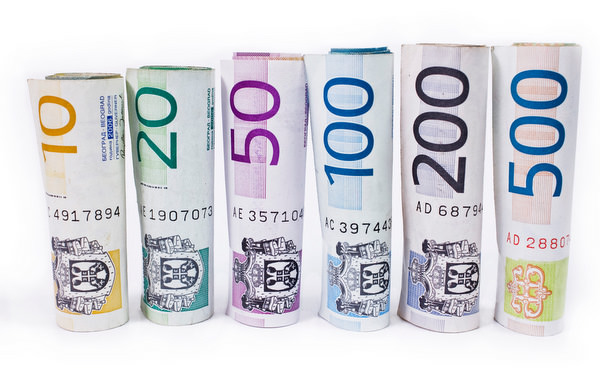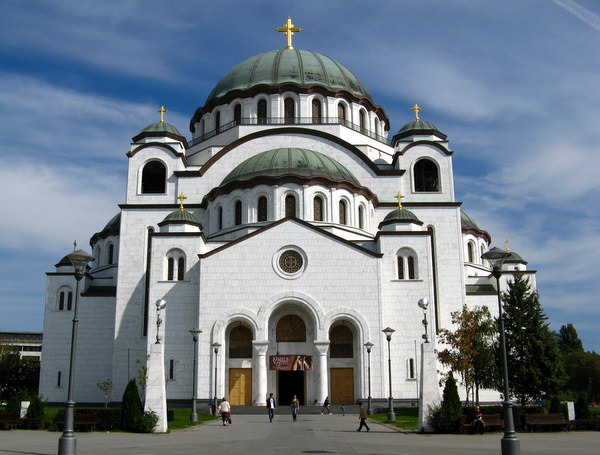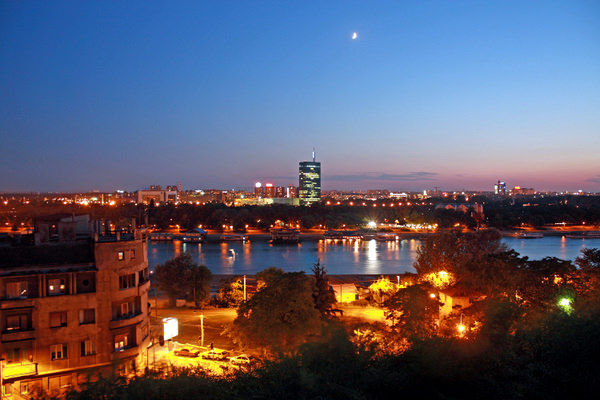Introduction to Serbia
Serbia was once the undisputed leader of the South Slav confederation that made up Yugoslavia. That region of the world was once and is now becoming again one of the most wonderful places to visit and spend a vacation. Serbia represents that movement to the fullest: a pariah in the 1990s for the atrocities of the civil war following the break-up of Yugoslavia and  pummeled by airstrikes in 1999, the country is just now regaining its footing as a strong, beautiful and attractive nation for outsiders.
pummeled by airstrikes in 1999, the country is just now regaining its footing as a strong, beautiful and attractive nation for outsiders.
Passports & Visas
Passports are required to enter and leave Serbia. Visas are not required for US citizens for visits of less than 90 days. For longer visits, contact the nearest Serbian embassy.
Obtaining a US passport
The US Government Website is where to start.
Visa information
Serbian Embassy
2134 Kalorama Road
Washington, D.C. 20008
Tel: (202) 332-0333
Fax (202) 332-3933
 Serbian Consulate General
Serbian Consulate General
201 East Ohio Street, Suite 200
Chicago, Illinois 60611
Tel: (312) 670-6707
Fax (312) 670-6787
Serbian Consulate General
62 West 45th Street, 7th Floor
New York, NY 10036
Tel: (212) 596-4241
Fax (212) 596-4363
American Offices
Provides consular assistance to U.S. citizens
U.S. Embassy Belgrade
50 Kneza Milosa Street
11000 Belgrade
Serbia
Tel:381-11-3619-344
Fax: 381-11-3615-989
Serbia Tourist Information
Culture and History of Serbia
 Serbia as we know it today was a gift from the Byzantine Emperor to the White Serbs who traveled south from the homeland near present-day Poland under the guidance of their leader the Unknown Archont to rid the land of the Avars, an ancient tribe of warriors harrying the Byzantines. The Avars are a footnote in history, whereas Serbia has lived on to become the preeminent nation in the Balkans. Caught in the crossfire of imperial warfare for hundreds of years, Serbia established an unbreakable identity founded on martial prowess, the Orthodox religion and a deep love of the lands that form a bridge between the traditional East and West. Serbians are proud, hospitable people who struggled against Imperialism, Fascism, Communism and eventually fought to preserve the federation of Slavic peoples they had led for hundreds of years. Serbia gave birth to 17 Roman emperors, held the borders against barbarians and maintained a Slavic culture that helped to solidify the Slavic identity while other nations perished.
Serbia as we know it today was a gift from the Byzantine Emperor to the White Serbs who traveled south from the homeland near present-day Poland under the guidance of their leader the Unknown Archont to rid the land of the Avars, an ancient tribe of warriors harrying the Byzantines. The Avars are a footnote in history, whereas Serbia has lived on to become the preeminent nation in the Balkans. Caught in the crossfire of imperial warfare for hundreds of years, Serbia established an unbreakable identity founded on martial prowess, the Orthodox religion and a deep love of the lands that form a bridge between the traditional East and West. Serbians are proud, hospitable people who struggled against Imperialism, Fascism, Communism and eventually fought to preserve the federation of Slavic peoples they had led for hundreds of years. Serbia gave birth to 17 Roman emperors, held the borders against barbarians and maintained a Slavic culture that helped to solidify the Slavic identity while other nations perished.
Currency in Serbia
The monetary unit is the Dinar (CSD) (at this writing 1 USD equals 73 CSD)
Driving in Serbia
Driving in Serbia can be dangerous for a few reasons. One, the roads outside of the cities are not maintained well so you might catch some rough roads if you want to cross the country. Two, the traffic police and toll booths are known to scam people out of their money, especially tourists.
Electricity in Serbia
220 V, 50 Hz
Emergency Numbers in Serbia
Police: 92
Fire service: 93
Medical emergency: 94
 Help on the road: 987
Help on the road: 987
Etiquette in Serbia
It is inadvisable to take photographs of any military or police buildings or operations in Serbia or Kosovo. Homosexuality is tolerated but open displays of affection between same-sex couples are frowned upon. Serbians are in general very boisterous and hospitable people who love to go out at night and drink and eat and just have a good time. The traditional Orthodox religion is still a cultural force, so don’t step on it, but all in all Serbians are informal and friendly and always ready with a joke.
Public Hours in Serbia
Most banks and post offices are open from 08.00 a.m. to 07.00 p.m. on weekdays and from 08.00 a.m. to 03.00 p.m. on Saturdays. On Sundays there is usually a designated bank or post office that maintains needed services. Food shops typically open at 06.00 a.m. and work until 09.00 p.m., both weekdays and Saturdays. Sundays they typically operate from 06.00 a.m. to 03.00 p.m. Everywhere, there are stores open 24 hours a day. Markets are opened every day from 06.00 a.m. to 05.00 p.m.
Safety
Serbia is much safer than most media would allow you to believe. The violence of the civil wars with Croatia, Bosnia and the conflict with Kosovo are over, but there is still simmering anger. Serbia is safe enough to travel in, for sure, but one should take precautions nevertheless.
According to the US State Government:
Anti-American feelings are strongest here around the anniversary dates of certain events and on some national holidays. Among these dates and holidays are March 22 (the beginning of the 1999 NATO bombing campaign), February 17 (the date of the 2008 independence of Kosovo) and ethnic Serb holidays such as St. Vitus’ Day (Vidovdan, celebrated June 28). Wins or losses in sporting events can also trigger violence. Although you should be careful, most recent demonstrations have been peaceful or only led to low levels of violence. Individual U.S. citizens were not targets of any recent demonstrations, but in a few isolated cases, soccer hooligans and petty criminals singled out and attacked citizens of other Western countries. We urge U.S. citizens to keep a low profile.
 People going to southern Serbia should keep in mind that the security situation there is not stable. U.S. Government employees on official business near the border between Serbia and Kosovo travel in fully armored vehicles. Americans thinking about traveling in southern Serbia near the Kosovo border should register with the U.S. Government and check in with the Embassy regularly for the latest security updates.
People going to southern Serbia should keep in mind that the security situation there is not stable. U.S. Government employees on official business near the border between Serbia and Kosovo travel in fully armored vehicles. Americans thinking about traveling in southern Serbia near the Kosovo border should register with the U.S. Government and check in with the Embassy regularly for the latest security updates.
Time Zone
Serbia is in the Central European Time Zone (GMT+1)
Tipping in Serbia
Tipping is not obligatory in Serbian restaurants, but if you are satisfied with the service then leave a 10 to 15% tip. At bars and with taxis leave a tip by rounding off the amount.
Weather in Serbia
Moderate continental, 4 seasons. Warm summers and usually long Indian summers; on average, there are 31 days annually with temperatures above 30C/86F (95 days above 25C/77F). Winters in Serbia are fairly cold and snowy, with an average of 21 days annually below zero (32F). Springs are usually short and rainy.
Getting Around Serbia
Air Transportation
Belgrade handles all international flights, but there are currently no discount flight that fly into Serbia from Europe. Check out the airport’s website Nikola Tesla airport
Bus
Travel by bus is very easy to and from Serbia. The country is landlocked and is easily accessible from all neighbors without having to change a bus
Car Rental
Many hire companies such as VIP, Hertz , and Budget have offices at the airport and in Belgrade.
Health
 Personal Medications
Personal Medications
No permit is required to carry medication in your luggage. However, you should pack your medication in its original containers and/or have your doctor’s prescription with you. Customs officials will have to be satisfied that you are not importing more than would be necessary for your personal use, taking into account the drug type and length of stay (for no more than three months).
Hospitals and out-patient clinics typically work 24 hours a day. Private medical practices are common and emergency medical service is available everywhere 24 hours a day. Pharmacies are opened from 08.00 a.m. to 08.00 p.m. on working days and on Saturdays from 08.00 a.m. to 03.00 p.m. Each city has a pharmacy that is open on Sundays and throughout the night.
Lodging in Serbia
Serbia offers every type of lodging from couchsurfing, to hostels and agritourism , to 5-Star resorts.
For Belgrade accommodation, Belgrade Eye has good resources.
Main Sights in Serbia
Belgrade
Belgrade, the lively cultural, musical and political capital of Serbia is one of the best cities in Europe for nightlife. Serbs are rejoicing as they did before the wars of the 1990s and perhaps the end of those wars adds a bit to the garrulous atmosphere.
Sremska Mitrovica
One of the oldest cities in Europe, Sremska Mitrovica was known in Roman times, and has maintained its historical heritage.
Subotica is considered by Serbs to be one of their most beautiful cities, which is truly saying something.
Kapaonik National Park is a wilderness and ski resort area in the mountainous southern region of Serbia.
Staro Selo is the site of one of Serbia’s national treasures, a wooden church built in the 19th century
Public Holidays in Serbia
 January 1 & 2 – New Year
January 1 & 2 – New Year
January 7 – first day of Orthodox Christmas
February 15 – Statehood Day of the Republic Serbia
May 1 & 2 – International Labor Day
Orthodox Easter – from Good Friday to the second day of Easter.
Telephones in Serbia
Dialing Procedures
To call Serbia from outside, the country code is +381. City codes are: Belgrade (0)11, Novi Sad (0)21, Niš (0)18 etc. For the international calls from Serbia dial 99 + code of the desired country + code for the city.
Useful Country Codes:
USA and Canada 1
UK 44
Cell phone usage
Check out these operators for cell phone use inside of Serbia:
064, 065 MTS
062, 063 TELENOR
060, 061 VIP
Returning to the US
Customs,VAT & Duty Free
US Customs and VAT information
Duty Free
If you are a U.S. or Canadian resident, you may qualify for a personal exemption which allows you to bring goods of a certain value into the country without paying customs duties, excise taxes, or Value Added Tax.

Mary A
Thursday 28th of February 2013
This is our last stop on our 3 city tour of this area...can't wait to dive into local culture.
Jools Stone
Monday 19th of July 2010
Excellently thorough and informative post. I plan to visit Belgrade and various other Balkan countires later this year when inter railing, so thanks for this handy info.
Perhaps something on the legendary Guca brass music festival, celebrating it's 50th birthday this year would be cool to add here?
Thanks again Jools from He Thought of Trains blog